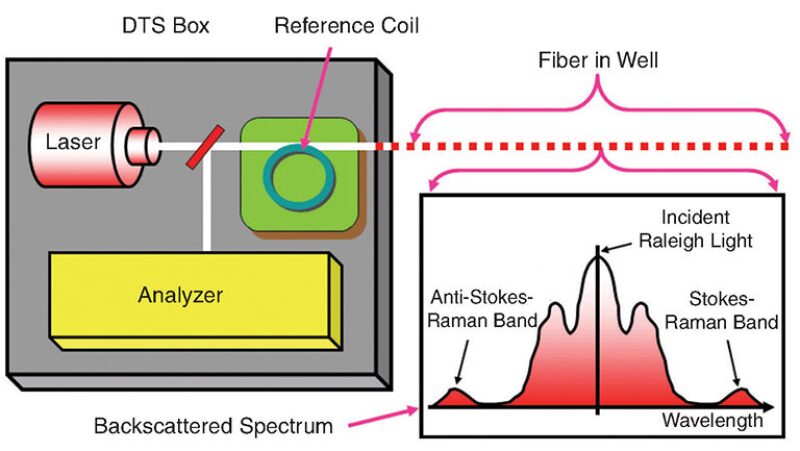Mechanical-diversion techniques can ensure acid injection into the various intervals of naturally fractured reservoirs. With these methods, surface pressure can be monitored to assess fluid-placement effectiveness for each zone treated, but uncertainty of the friction pressure in the pipe while pumping can result in an incorrect interpretation of fluid entry. A new technique using fiber-optic distributed-temperature-sensing (DTS) measurements offers a solution when bullheading by providing an indication of where the acid has been injected into the fractured reservoir.
Introduction
The variability of fracture density and aperture along with fluid conductivity poses challenges to the goal of achieving uniformity of acid distribution to all fractures in a well. The optimum technique would allow effective treatment of all fractures, be operationally efficient, and facilitate the determination of treatment effectiveness in real time.
Diversion of the treatment fluid helps ensure that the entire interval is stimulated effectively on the basis of design objectives.


